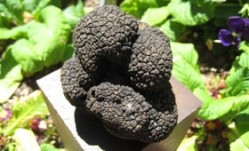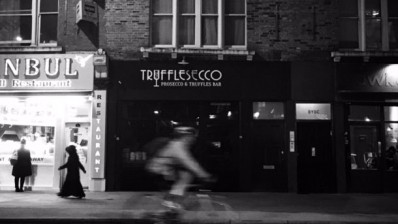Foraging chefs could hit gold after lucrative truffle harvests

Foraging chefs may want to search through the roots of old oak, beech, birch and hazel trees if they want to hit gold this summer, after hoards of truffles worth over £1k have been reportedly spotted.
Truffle UK, a Dorset-based company that distributes truffles found at its secret Wiltshire woodland location, has announced a surge in the size and quantity of the lucrative delicacy this season.
"We had a look at some (truffles) three weeks ago, but they weren`t right,” Nigel Haddon-Paton of Truffle UK told the Guardian. “They had grown slowly because of the spring cold. However, since then we have had lots of rain, which has helped them grow, and it has also been humid, so they are doing very well.
"Like most crops, truffles need water and warmth and that`s what we`ve had this summer. There are lots of truffles and we have found them up to 500g each - bigger than cricket balls.”
The summer (burgundy) truffle is the type most commonly grown in the UK, and can fetch up to £280 per kilo. Truffle UK last year reported a harvest worth £27k, and is expecting an even bigger harvest this year.
Meanwhile, a Plymouth tree surgeon and gardener, Chris Hunt, discovered a hoard of truffles growing at the foot of a birch tree, while clearing undergrowth in a neighbour’s garden. He found 10 apple-sized truffles in total, thought to be worth around £1k, hidden amongst the roots of old oak and beech trees thought to be around 150 years old.
“I`ve never found anything like this in 10 years of digging up people`s gardens," he said.
In the past pigs have been traditionally used to harvest truffles, but foragers run the risk of the animals eating whatever they do find. Nowadays the best way to rummage around wooded areas is to use specially trained truffle dogs, or alternatively, simply observe where the truffle fly lays its eggs, as it’s believed they only lay on the finest of specimens. Chefs may want to adopt a more unorthodox method of foraging though, like Haddon-Paton’s farmer, who uses his bare feet to feel around in the soil for the hard lumps.
The best areas in the UK to find truffles, according to Truffle UK, are places with chalk or limestone soils where the pH value is high, such as the North and South Downs, north of Oxford, West Devon around Brixham, parts of the Peak District, and Hampshire and Wiltshire into Dorset.
Truffles have a strong, distinctive nutty flavour and, depending on type, a very pungent smell. They’re popular in high-end restaurants where their raw shavings are usually used to complement bland dishes such as pasta, potatoes and rice, although they can also be used to flavour oils, cheese and fats.
The black truffle from Perigord in France and the white truffle from Piedmont in Italy are considered to be the best in the world, with a 1.5kg white truffle fetching a hefty £165k at auction last year after it was found near Pisa.
Truffle hunting in Tuscany with Imperio and Tobi:
Want more videos?
Check out our YouTube channel at http://uk.youtube.com/user/BigHospitality


















